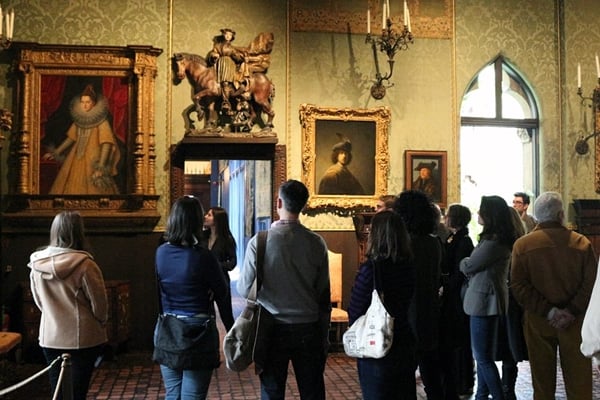
Photo: Isabella Stewart Gardner Museum, via Facebook.
Over the next 6 years, as many as 25 nonprofit visual and performing arts organizations will receive a total of $40 million courtesy of the Wallace Foundation, a New York-based philanthropic organization dedicated to providing education and other assistance to disadvantaged children, reports the New York Times.
The organizations that will benefit from this generous gift, to be announced in February 2015, are expected to include museums, theaters, dance companies, concert venues, opera houses, and multidisciplinary presenters. This new initiative, titled “Building Audiences for Sustainability,” is designed to help these organizations and venues, located across the country, to reach wider audiences.
“We see helping arts organizations find ways to thrive, not simply survive, as an important part of our mission,” said Wallace Foundation president, William I. Miller, in a statement. “This new effort will not only support the plans of about 25 great arts organizations to expand and diversify their audiences, it will also provide new insights and knowledge that we hope will be useful to the entire field.”
The announcement is accompanied by the release of “The Road to Results: Effective Practices for Building Arts Audiences,” a case study that offers nine suggestions for performing arts organizations looking to better engage with audiences, and a panel discussion on the subject featuring Miller; Jane Chu, chairwoman of the National Endowment for the Arts; Robert Battle, artistic director of the Alvin Ailey American Dance Theater; Kelly Tweeddale, executive director of the Seattle Opera; and James Houghton, founding artistic director of the Signature Theatre Company. Findings from the initiatives will be made available to organizations that are members of seven partner groups, including the American Alliance of Museums.
“We hope this initiative will shed light on approaches to building audiences that are sustainable,” added Wallace Foundation director of arts Daniel Windham. “Sharing our findings is at the core of all Wallace initiatives, and the insights we will gather from this important work aim to help performing arts organizations across the country have more and better information about what works, what doesn’t, and why.”